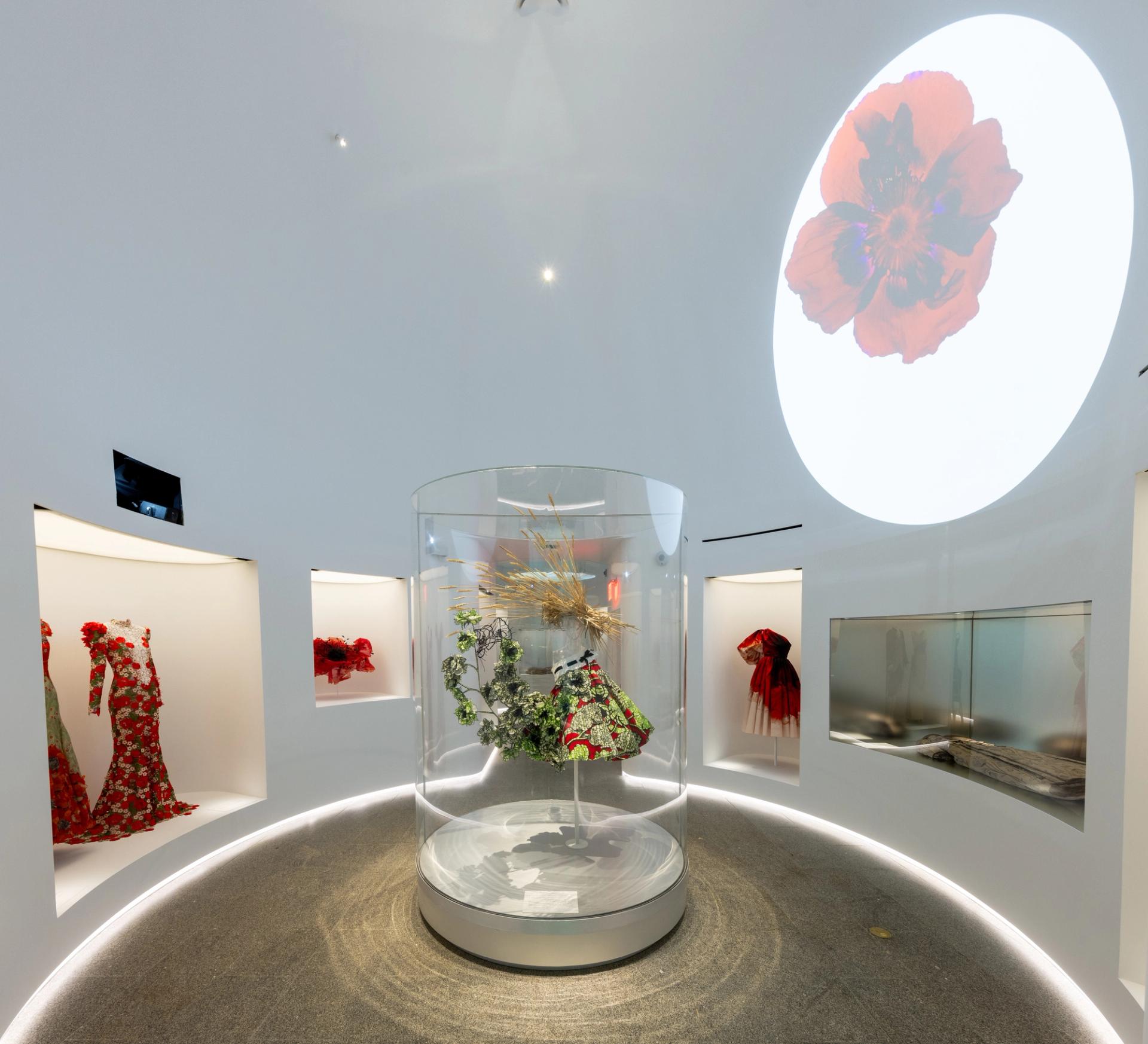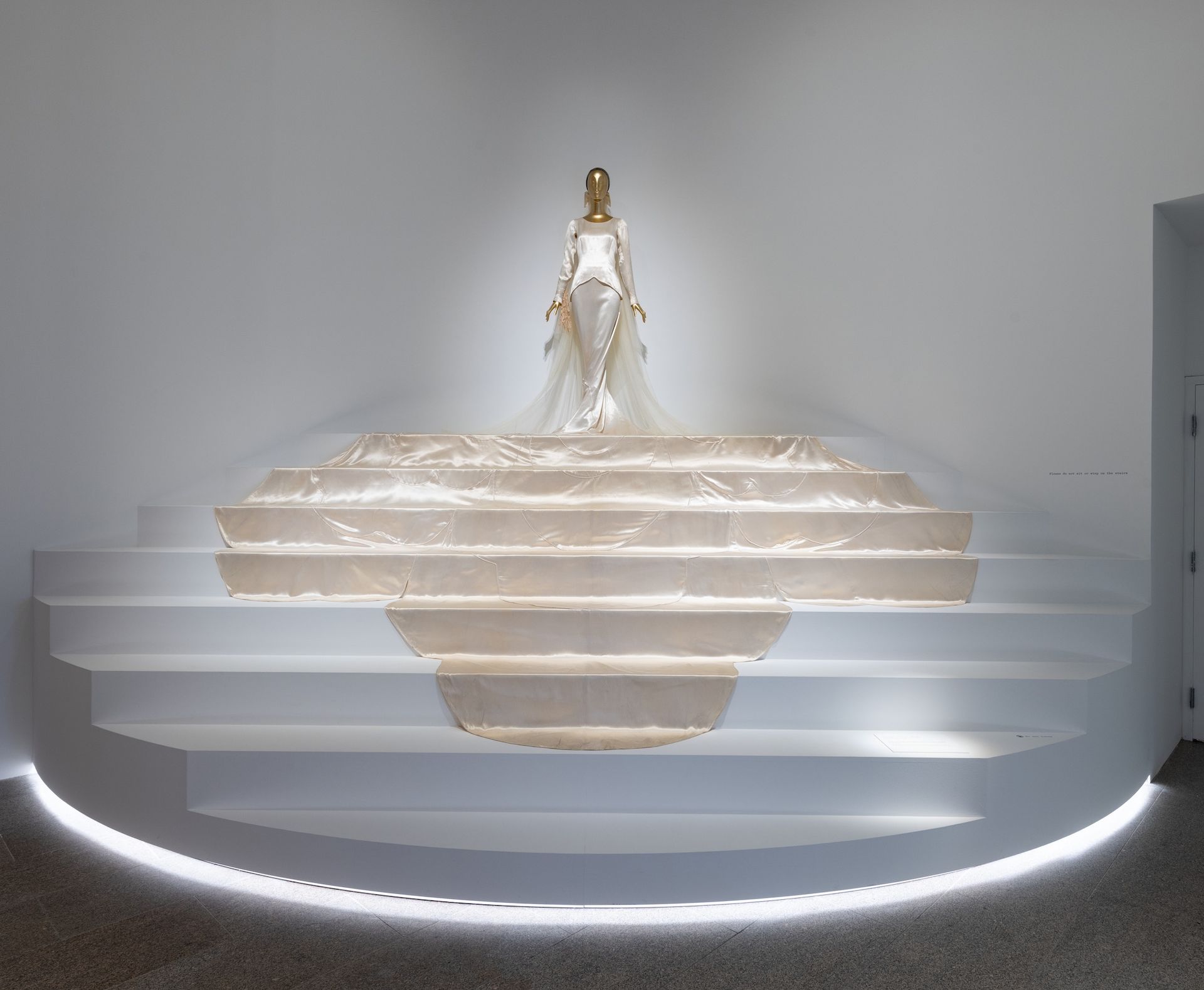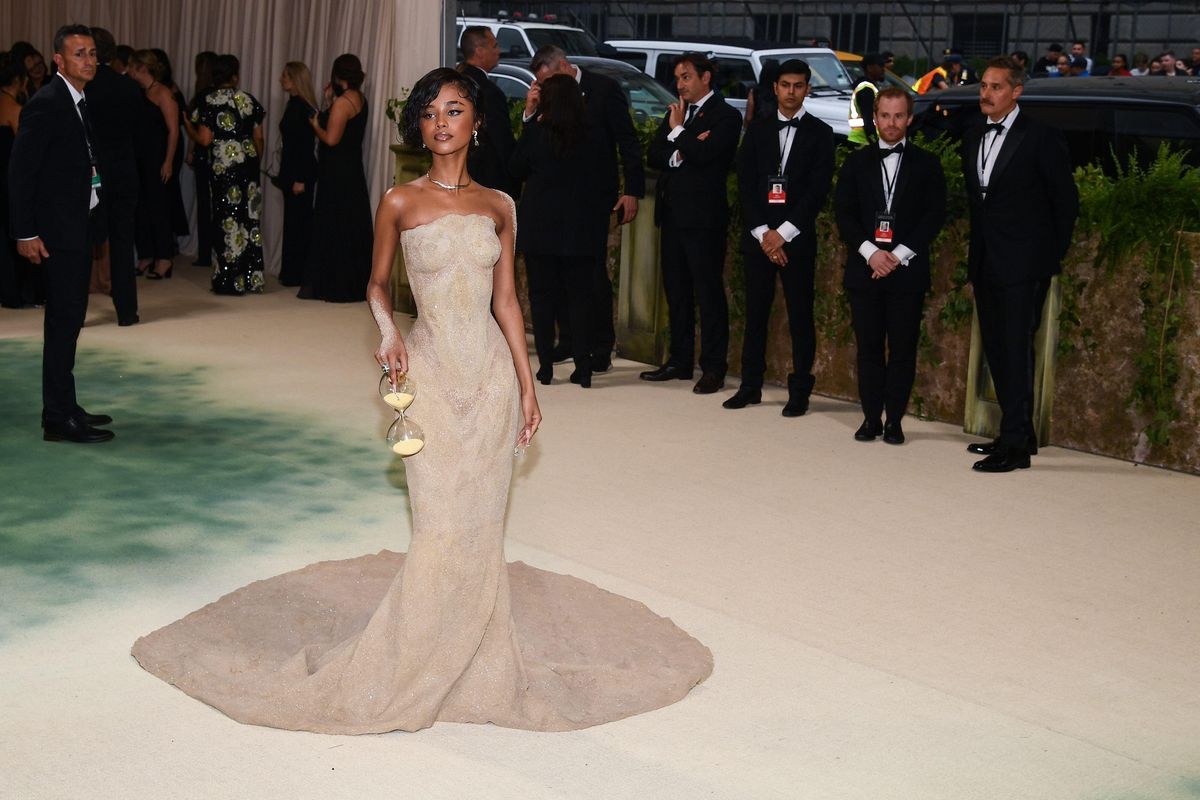When the Metropolitan Museum of Art’s Costume Institute presents non-monographic shows, its exhibitions are known to get cerebral. For some, the layered approach can seem contrived, highfalutin and unnecessarily complicated; for others, it is revelatory and thought provoking to discover how dress is inextricably linked to nearly every facet of life, from poetry and politics to philosophy and fine art. With its latest spring blockbuster, Sleeping Beauties: Reawakening Fashion (10 May-2 September), and the theme for the Met Gala on Monday (6 May), “The Garden of Time”, the museum has left many wondering what exactly either is about.
At Monday’s preview for Sleeping Beauties—held hours before celebrities donned their floral finery at the annual fundraising extravaganza and the NYPD arrested pro-Palestine protestors blocks away—Andrew Bolton, the curator in charge at the Costume Institute, poignantly explained the connection between the show and gala theme.
“In many ways, nature serves as the ultimate metaphor for fashion in its rebirth, renewal and cyclicity, but also its transience, ephemerality and evanescence,” Bolton said. As a “living art form”, fashion “requires most of our senses for its fullest appreciation, and greatest understanding”.

Gallery view of the poppies room in Sleeping Beauties: Reawakening Fashion at the Metropolitan Museum of Art Costume Institute Photo © The Metropolitan Museum of Art
With its spring 2024 show, which features 220 pieces exclusively from its collection, the Met endeavoured to reactivate garments and accessories using various forms of technology in a multisensory installation. The titular “sleeping beauties”, for example, are items of clothing displayed flat, as they are too fragile to be shown upright or on a mannequin. Three-dimensional films, on view beside certain objects, animate the garment, revealing it on a body, in motion, viewed from 360 degrees and in extraordinary detail. Other sensory experiences throughout the exhibition let visitors hear the rattling sound of razor clamshells on an Alexander McQueen dress or smell the distinctive scents of some garments’ former wearers (body odour, cigarettes, perfume and all). Impressionism enthusiasts will particularly love a gallery spotlighting Vincent van Gogh’s painterly blooms, which served as inspiration for Yves Saint Laurent’s spring/summer 1988 haute couture collection.
Garments in the exhibition span from the 17th century to the present and include dozens of “targeted acquisitions”, Bolton said, to expand the diversity and inclusion within the Met’s holdings, while also identifying emerging designers and those with ethical and sustainable practices. Although a substantial amount of the show is dedicated to flowers (an enduring motif that prevails even as the silhouettes evolved over centuries), the galleries encompass a wider view of nature where birds, marine life and insects also get their due.

The beetle wings gallery in Sleeping Beauties: Reawakening Fashion at the Metropolitan Museum of Art Costume Institute Photo © The Metropolitan Museum of Art
Given the breadth of the exhibition, it’s no surprise the gala’s “The Garden of Time” dress code inspired myriad interpretations. But one trend was undeniable: after the many black-and-white homages to Karl Lagerfeld last year, the 2024 Met Gala brought back colour.
Florals for spring may not be ground-breaking, but they certainly look fabulous when done to the extreme. Among the standouts were model Gigi Hadid in an epic Thom Browne gown that took more than 13,500 hours to make entirely by hand, and actress and director Rebecca Hall in a diaphanous Danielle Frankel gown with painted wildflowers on her skin to match. Alia Bhatt’s jaw-dropping pastel Sabyasachi saree (and its 23-foot-long train) brought a refreshing silhouette to the carpet, while Demi Moore’s dramatic Harris Reed gown gave ravishing deadstock Fromental wallpaper a second life.
The men on the red carpet never looked better. Singer Sam Smith and designer Christian Cowan were sleek and chic in their coordinated tuxedos, each pierced with a rose closure (actual red roses that were dipped in solid 24-carat gold and sterling silver). Brooches ran wild, among the most striking being actor Adrien Brody’s massive vintage diamond and aquamarine bird design by Elsa Jin and actor Mike Faist’s whimsical radish one by Loewe, the gala’s sponsor.

Zendaya in her second look at the 2024 Met Gala PA Images / Alamy Stock Photo
While there was no shortage of beautiful floral dresses, many of the most exciting looks dared to venture into Sleeping Beauties’ other thematic areas. South African singer Tyla was undeniably the night’s most memorable look. Designed by Balmain as the “Sands of Time”, her look consisted of a body cast of appliquéd sand and micro crystal studs, accessorized by an hourglass. Although restrictive—she had to be carried up the stairs—she was a total desert mirage vision. The French house’s creative director Olivier Rousteing sported a matching sand-covered top shaped to resemble his face. Actress Mindy Kaling conjured a desert sandstorm with her undulating, sculptural nude gown by Gaurav Gupta, said to emulate a “melting flower”. Wearing H&M, model Paloma Elsesser also donned a body cast—this time in reference to Shaun Leane and Alexander McQueen’s sterling silver Rose Corset for Givenchy’s 2000 Haute Couture collection. Seemingly oxidised, Elsesser’s breastplate could easily double as a Claude Lalanne sculpture.
Model and actress Iris Law in Versace and Met Gala co-chair Jennifer Lopez in Schiaparelli embraced butterflies in their attire, while fellow co-chair Zendaya and actress and singer Cynthia Erivo combined the beauty of flowers with meandering insects. The latter wore Thom Browne, while the former first wore a blue and green John Galliano for Maison Margiela gown, iridescent like the beetles and feathers adorning it. The actress changed midway into vintage Givenchy couture, also designed by Galliano, for its spring 1996 collection. Her bouquet of roses hat, designed by Philip Treacy for McQueen’s spring 2007 ready-to-wear show, called to mind the many floral headpieces on view in Sleeping Beauties. That same McQueen collection concluded with an iconic frock, comprised of silk and fresh flowers that shed as the model walked—a missed opportunity for this year’s Met Gala attendees to resurrect that magical runway moment.
Many stars also channeled the sea. Ariana Grande wore a Loewe dress whose bustier was made of mother of pearl, while actress Elle Fanning shimmered in a sheer, skin-tight Balmain dress evoking a frozen stream (though it appears the French house may have taken a little too much inspiration from two young Israeli designers, Tama Fuchs and Nitsan Zapler). Janelle Monáe’s Paco Rabanne-esque Vera Wang gown was similarly iridescent with a sculptural shoulder conjuring frozen water, much like Fanning’s.
Lily Gladstone looked to the sky for her inspiration. Known to wear Indigenous fashion on the red carpet, the Killers of the Flower Moon actress, looked regal in a black dress and cape, created by Gabriela Hearst and the Kiowa jeweler Keri Ataumbi. “I love the combination of the sleeping beauty and garden of time [themes], articulating itself through a blanket of stars,” the Piegan Blackfeet and Nez Perce star told Vogue. For the look, Ataumbi hand-crafted stars from recycled silver, forming them in different constellations as seen from the Great Plains. “Since time immemorial, Kiowa, Blackfeet, and other Plains people have always said we come from the stars, and it is where we return to join our ancestors.”
Other stars showed the passage of time literally—entrepreneur Sabrina Harrison wore a goldclock-emblazoned dress by New York City-based Filipino designer Chris Habana (centring a Dalí-style melting clock)—and figuratively. Actress Chloë Sevigny wore a gown by Turkish British designer Dilara Findikoglu repurposing Victorian fabrics (with Victorian-mourning-inspired hair, too), while singer Rita Ora also looked to the past. Her revealing custom Marni look was composed of one-of-a-kind antique glass beads from around the globe—some dating back to ancient Rome—for another tapestry of time.

The Mermaid Bride gallery in Sleeping Beauties: Reawakening Fashion at the Metropolitan Museum of Art Costume Institute Photo © The Metropolitan Museum of Art
In spite of all the bedazzled naked dresses (a “sleeping in the nude” take on the theme, perhaps) the night’s most successful looks had a distinct point of view, either wholly original à la Tyla in Balmain, or with clever, intentional references. Dressed in Loewe, Anna Wintour herself channelled an 1889 House of Worth cape (black with a striking tulip motif) on view in the exhibition. In Balenciaga, French actress Isabelle Huppert was a triumph in her homage to the exhibition’s knockout final look, Callot Soeurs’s 1930s “Mermaid Bride” wedding dress with a sinuous never-ending train. Three looks were nearly identical to those featured in Sleeping Beauties: singer and actress Maleah Joi Moon in Collina Strada, Nicki Minaj in a Marni frock with three-dimensional metal flowers and model Amelia Gray Hamlin in a light-up terrarium bubble dress by Undercover.
As convoluted as “The Garden of Time” brief seemed, the gala attendees brought a renewed sense of joy and creativity to the pageantry, raising the bar for future iterations of the buzzy event. Like Bolton’s description of fashion itself, many stars were, indeed, living works of art.


